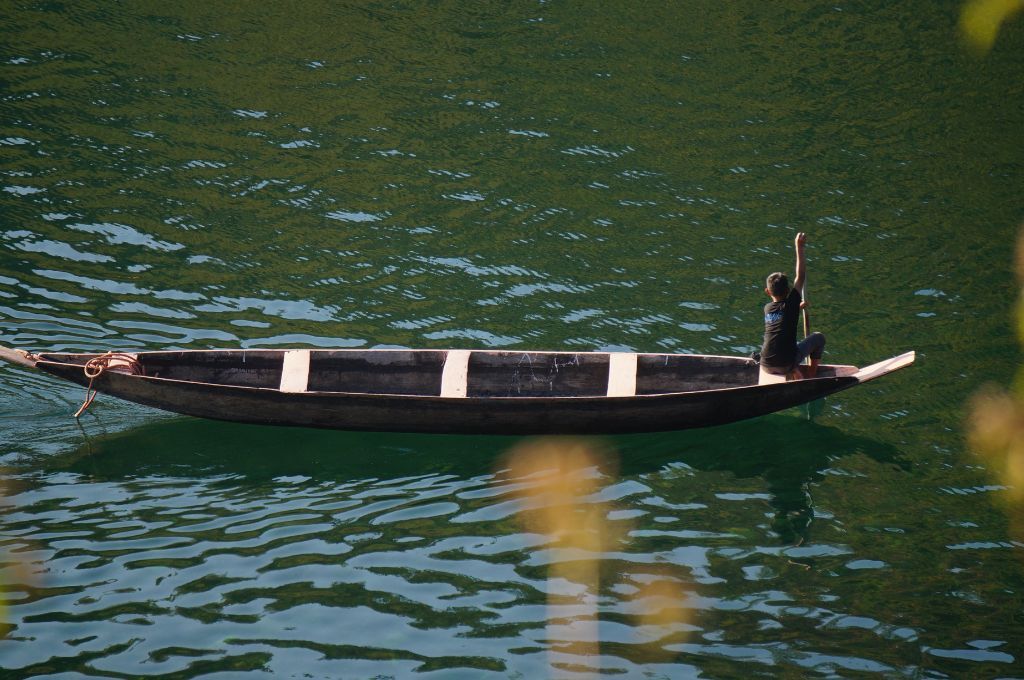We are beginning to see an increasing number of organisations adopt a ‘systems change’ lens. However, there is limited conversation between these various systems change players, which in some ways can be counterproductive because of a lack of understanding of how different systems change efforts impact one another.
The idea of systems change has origins in multiple movements—in people’s demands for land rights or in response to environmental crises; in calls for transitions to cleaner energy sources; in achieving the 17 Sustainable Development Goals (SDGs); or in the monitoring of this progress.
Systems change makes it necessary for us to ensure that the various parts of an ecosystem work in cohesion. But often, most organisations involved in such work do not consciously coordinate with one another. Hence, there is little understanding of what kind of systems change they are producing together.
It could well be the case of two people pushing a car from the back and two people pushing it from the front. Each pair thinks that they are the ones responsible for producing the change in the right direction, but in essence, the car is not moving. Would we still call it systems change just because the four players are adopting that lens and their efforts are being invested?
Competing goals or collaborative systems change?
Take the case of systems change in the energy sector, which requires the promotion of renewable energy and the decarbonisation of energy-intensive sectors. The former may involve setting up large-scale solar power plants and wind turbines on vast landscapes. Such efforts, accompanied by improved financing and subsidies for the uptake of renewables, are steps in the right direction. Consider another systems change goal, that of helping pastoralists and forest dwellers claim their land rights for a secure livelihood. This involves protecting landscapes where, for generations, people have been living and accessing the resources they need for their livelihood. What if the two initiatives—setting up renewables and protecting land rights—require the use of the same land? Are these efforts mutually reinforcing each other’s goals or could they lead to suboptimal outcomes due to their interactions? Are we collectively reflecting on the results our endeavours could be producing?
For systems change to be successful, goals must be seen together and implemented using a systems approach.
While the emergence of a potential conflict is not the aim of either of the goals, the interactions between them could unintentionally create more challenges. Systems change done in isolation runs the risk of producing less than ideal outcomes, and in some cases leads to the emergence of new problems. With an ill-planned application of this approach, we will see incremental change, while our pursuit or our dream is to create transformational change.
Another example is with regard to the goal of increasing farmer incomes, which focuses on intensifying the agriculture system in order to increase the output and thereby income. In the same agricultural system, there are other sustainability goals such as regenerating soil health and conserving groundwater. Now, increasing farmer incomes and soil and groundwater conservation may seem like competing goals. For example, improving farmer incomes might lead to the intensification of farming using external inputs and groundwater extraction while conservation efforts might result in the development of groundwater protocols and soil regeneration efforts by changing cropping practices. Altogether, they could send mixed signals to people who are at the forefront of implementation. For systems change to be successful, these goals must be seen together and implemented using a systems approach. If implemented in isolation, their execution could create push and pull factors on the ground that might lead to no impact. Meaningful systems change cannot be achieved in such a scenario.

What needs to change?
1. Zoom out from our own systems change boxes
While we are immersed in our own activities and in pursuit of our targets, we must periodically take the time to look at the larger effects our efforts are producing and then sync up in order to enhance collective impact. The key question to reflect upon is this: What is the larger system that we are embedded in and how are our attempts contributing to overall systems change, in desired and undesired ways?
We need different parts of the system to convene in order to reflect together. For a start, there could be simple roundtables where the different stakeholders are made to formally map the larger system that they are part of and then locate their own responsibilities and actions. This has to happen at two levels: a) a self-reflection process where each stakeholder positions themselves in the larger system, and b) together, everyone reflects on how their own actions are producing different types of results.
A recent effort in this direction was a systems convening that DESTA conducted at the Dialogues on Development Management organised by the Indian School of Development Management (ISDM) in New Delhi, where different philanthropies and nonprofits came together to consider why certain systemic problems persist despite their best efforts to solve them.
The convening highlighted concerns about an overemphasis on measurable results; a preference for short-term, tangible outputs over long-term outcomes; and an imbalanced funding landscape leading to overinvestments in specific issues. For instance, it’s easier to gather support for girl child education, whereas addressing long-term systemic issues like gender norms—which can be more challenging to measure—receives less attention. Similarly, climate mitigation solutions are easier to put a number to as opposed to climate adaptation and resilience solutions. The convening helped participants self-reflect on their institutional policies, behavioural aspects, and belief systems that are contributing to the problems they are trying to solve. The need for listening to, trusting, and co-creating solutions with people whose opinions might be different from ours, were some of the major takeaways.
The above example is just the beginning of what should become a ritual at an ecosystem level. Organisations should periodically come together for such reflective exercises in their own circles.
2. Develop a system for systems change
In order to operationalise systems change, we need to create a system for systems change that focuses on a greater objective and beyond individual efforts.
Any system must pull together various stakeholders through convenings where people ask questions, address barriers, talk about constraints, and contemplate on the larger system.
This needs to happen from the perspective of two sets of entities: the first set comprises those who are keen to take on this approach but lack the means to do it, and the second comprises systems change people or organisations who get boxed into smaller systems that they’re trying to influence. Both groups face limitations that make it difficult for them to zoom out and coordinate with each other to think about the larger system they’re influencing. The system for systems change should enable people and organisations to develop and use processes and tools that will guide them in achieving more holistic goals. It must enable diverse actors to break through the silos of ‘organisation’ and ‘expertise’ that they have acquired and within which they are situated, and allow for multi-expert teams to learn together and achieve long-term outcomes that work for all people concerned. Any such system must pull together various stakeholders through convenings where people ask questions, address barriers, talk about constraints, and contemplate on the larger system of which they’re a part, and how they situate themselves in it. What are their responsibilities? And what are the trade-offs or co-benefits that could be amplified?
3. Democratise systems thinking and creating knowledge commons
We need to democratise the means—tools, pedagogies, and methods—of systems change and create champions who could bring these means to different organisations. For this to happen, a knowledge commons must be built, one that can be used by people to undertake this ambitious journey. The commons can take various forms: It could be a guidebook or training manual for those who lack the resources for applying systems change, learning games that use serious simulations, multiple decision-support systems, or a model library published online and free for everyone to use.
For instance, at DESTA, we developed a groundwater simulation model that we used for scenario planning in different villages. The village further came up with seven progressive steps on how groundwater can be conserved. Tools such as this one can be made publicly available and different organisations can use them to conduct participatory groundwater conservation exercises with communities. The practice of using such tools also allows organisations to co-create solutions. For example, groundwater conservation requires very local and place-based solutions that must evolve from discussions between the locals, who consume this groundwater and are responsible for its sustainability, and those who are involved in the national policymaking space. Thus, systems change has to be a bottom-up and collaborative process. It cannot be left to a set of experts who often don’t end up considering the knowledge and requirements of different stakeholders.
In essence, all knowledge commons should help people adopt the science and implement it in real-world systems as practitioners.
4. Build a systems leadership
For effective systems thinking to happen, merely creating knowledge commons or holding conventions may prove to be insufficient. Different organisations need to build a culture around systems thinking in order to continue such thinking. This calls for creating systems leaders—and not just systems thinkers—who build and execute technical work. Systems leaders could be organisation heads who produce enabling conditions for and motivate team members to learn and apply systems thinking even when they are too occupied with their day jobs to keep their curiosity alive. The idea is for the process of the system for systems change to replicate itself at different organisations through the creation of systems leaders. It would then become a continuous process instead of being limited to a set of discrete events of collective reflections and the creation of knowledge commons.
The way forward
A system for systems change could take many physical forms. It could be a movement, a network, or a practice that can be adopted by organisations or groups of people. There need not be one central node that controls its existence and continuation.
This has to begin with some physical interventions such as the creation of knowledge products, open access to an online repository, training and creating systems thinking champions, systems convenings, and small roundtables and circles for collective reflections. In the long run, the process must replicate itself for its scale-up to be possible.
No one has the definitive answer to what the best practices of systems change are, but we all have some notions of what these could look like. We need to integrate these approaches and strengthen them for wider adoption. We will know what works and iteratively improve as we apply these tools. This learning process will help us drive individual and collective systems change that are aligned together.
—
Know more
- Read this article to learn more about a nonprofit’s attempts to change systems that impact children with developmental disabilities.
- Listen to this ‘masterclass’ on systems change approach to solving complex societal issues.
- Read this article to know more about creating systems change to protect India’s 200 million acres of community lands.
Do more
- Explore different knowledge commons tools, including this landscape management tool, this energy simulation model, and this solar pump simulation model.
- If you are inclined towards systems thinking and would like to contribute to a knowledge commons initiative, connect with the author at mihir@desta.co.in.





